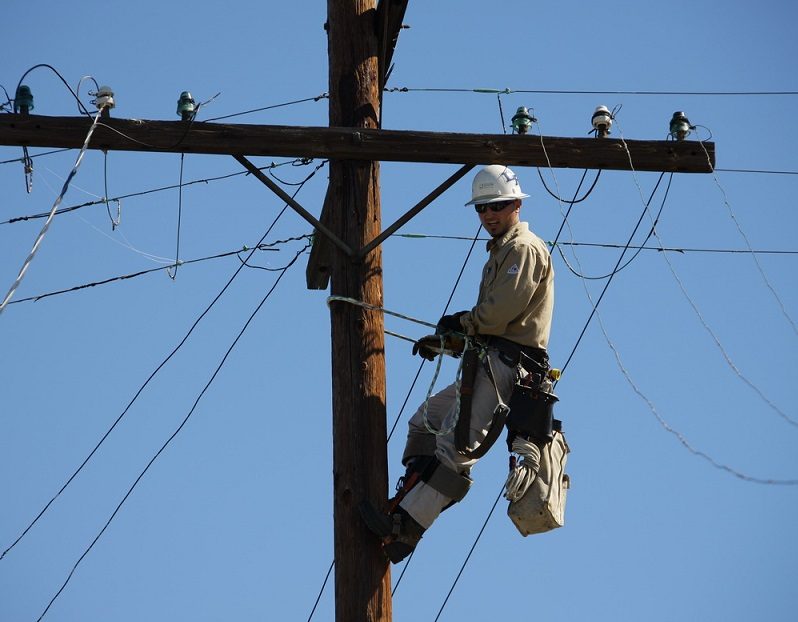The Ups and Downs of Power Costs
The impact of tax cuts could help utilities hold the line and offset capital costs.
By Gail Kalinoski

Photo: Southern California Edison
The cost of generating power has declined in recent years, but commercial property owners and managers may not be seeing that reflected in their bills, even with a boost from the tax cuts enacted by Congress late last year.
Rates have gradually increased over the past 10 months after a decade of decreases, noted Andrew Barth, an energy broker and partner at CSD Energy Advisors in Houston. “But for the first time we are consistently seeing that the prices are moving back up,” he said.
The U.S. Energy Information Administration reports that the average price for the commercial sector during the first five months of 2018 fluctuated from 10.44 cents per kilowatt hour in April to 10.51 in May. The price in January and March was 10.47 and 10.60 in February. By comparison, the 2017 average was 10.68 cents per kilowatt hour with a low of 10.23 in January and a high of 11.07 in September.
Changing Currents
Numerous factors affect rates, but the greatest impact of late has been from capital expenditures by utilities for upgrading, modernizing and decarbonizing the grid, explained Scott Smith, vice chairman & leader of the U.S. power and utilities practice for Deloitte LP. Declining energy prices, particularly for natural gas, have made the increase in bills less noticeable.“The (lower) cost of power has definitely been a big driver that has helped all types of consumers avoid the price shock,” Smith said.
Smith said the grid was not designed to handle the increasing amount of renewable energy that is coming on line. Deloitte’s 2018 Outlook on Power and Utilities report notes that generation from non-hydro renewable sources, mainly solar and wind, doubled from about 5 percent in 2012 to almost 10 percent in 2017. During the same time, about 50 gigawatts of coal-fired generation capacity has been taken offline.
Barth also pointed to the closing of peaker plants, mostly coal-powered facilities, as a factor in increasing rates. “The main reason is that as the renewables continue to come on line and the price of natural gas has dropped so dramatically over the last 10 years, the generators are no longer viable at the current price,” he said.
But a utility still needs to maintain the same generation capacity, as if the renewable power doesn’t exist, Barth explained. “The scarcity is being priced in now,” he said, referring to closed peaker plants.
Utility bills are also beginning to see the effects of the Tax Cuts and Jobs Act of 2017. In regulated states, which make up the majority of the U.S., utilities are required to pass through savings to customers because their profit margins are capped, Barth noted.
It’s unclear how much savings commercial customers will see, but the Edison Electric Institute estimates that more than $5 billion will flow back to customers.
Keeping the Lid On Costs
Jessica Bates, a BOMA International spokesperson, said that it’s too soon to hear reports from members about tax cut impacts. “The savings could be in the lower single digit percentage, but this would be noticeable in the CRE industry,” she said. Many BOMA members report utility costs for the Office Experience Exchange Report, an annual benchmarking resource. In 2017, the study found that electricity costs for office buildings averaged $1.70 per square foot, up from $1.60 in 2016.
The Institute of Real Estate Management also tracks energy data from its office sector members. In 2017, the median price paid per square foot by owners of 847 suburban buildings for HVAC/electricity costs was $1.72, compared to $1.78 paid by 878 suburban buildings in 2016. For downtown buildings, the median price per square foot held steady at $1.79 for 2016 and 2017; the findings were based on reports from 335 buildings in 2016 and 236 in 2017.
Nicholas Stolatis, principal at EPN Real Estate Services Inc., advises clients to compare their properties with those benchmarking reports to see if they need to take action. Utility bills typically account for about 25 percent of overall costs for a commercial building, he noted. “If we do our job as an industry, implementing operational best practices, energy efficiency and investing with a rate of return in the available technology, I think we can keep a lid on energy rates,” Stolatis said.
One strategy gaining traction is fixed-rate programs.“We see people lock in their prices between three and six months before their contracts are expiring,” Barth said. The typical term is 24 months.







You must be logged in to post a comment.